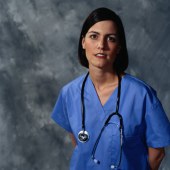- Skip Storing This Everyday Product in the Fridge Door
- Green Tea + B3 Pairing May Boost Brain Health
- Navigating Your Midlife Crisis: Embracing New Possibilities
- City Raccoons Showing Signs of Domestication
- Mapping the Exposome: Science Broadens Focus to Environmental Disease Triggers
- One Week Less on Social Media Linked to Better Mental Health
- Your Brain Changes in Stages as You Age, Study Finds
- Some Suicide Victims Show No Typical Warning Signs, Study Finds
- ByHeart Formula Faces Lawsuits After Babies Sickened With Botulism
- Switch to Vegan Diet Could Cut Your Greenhouse Gas Emissions in Half
Free Clinics Run by Med Students on the Rise


The number of medical student-run free clinics at U.S. medical schools has doubled in the last decade, according to a new study.
In 2005, there were about 110 student-run free clinics at 49 medical schools that belonged to the Association of American Medical Colleges (AAMC). This new study found just over 200 such clinics at 86 AAMC-member medical schools.
More than half of all medical students are involved in such clinics, Dr. Sunny Smith, of the University of California, San Diego, and colleagues found. But, about half of the medical schools offer no academic credit to students for their participation in the clinics.
Outpatient adult medicine, health care maintenance, chronic disease management, language interpreters and social work are services often provided by the clinics, according to a university news release. Diabetes and high blood pressure are the most common types of health conditions treated at the clinics, the investigators found.
Medical students said the biggest challenges at the clinics are too few faculty supervisors and a lack of funding, the study authors noted.
The new research was published in the Dec. 10 issue of the Journal of the American Medical Association, a theme issue on medical education.
“Despite the lack of academic credit at many institutions, most medical students are volunteering in this setting. Given the ubiquity of [these clinics] in the education of future physicians, further research is needed to assess their educational and clinical outcomes,” Smith and colleagues wrote.
“The lack of funding and sufficient faculty supervisors identified as the biggest challenges in [these clinics] are actionable items because institutional support could help stabilize and improve these educational opportunities for years to come,” the authors concluded.
More information
The American Medical Association has more about medical school.
Source: HealthDay
Copyright © 2025 HealthDay. All rights reserved.










